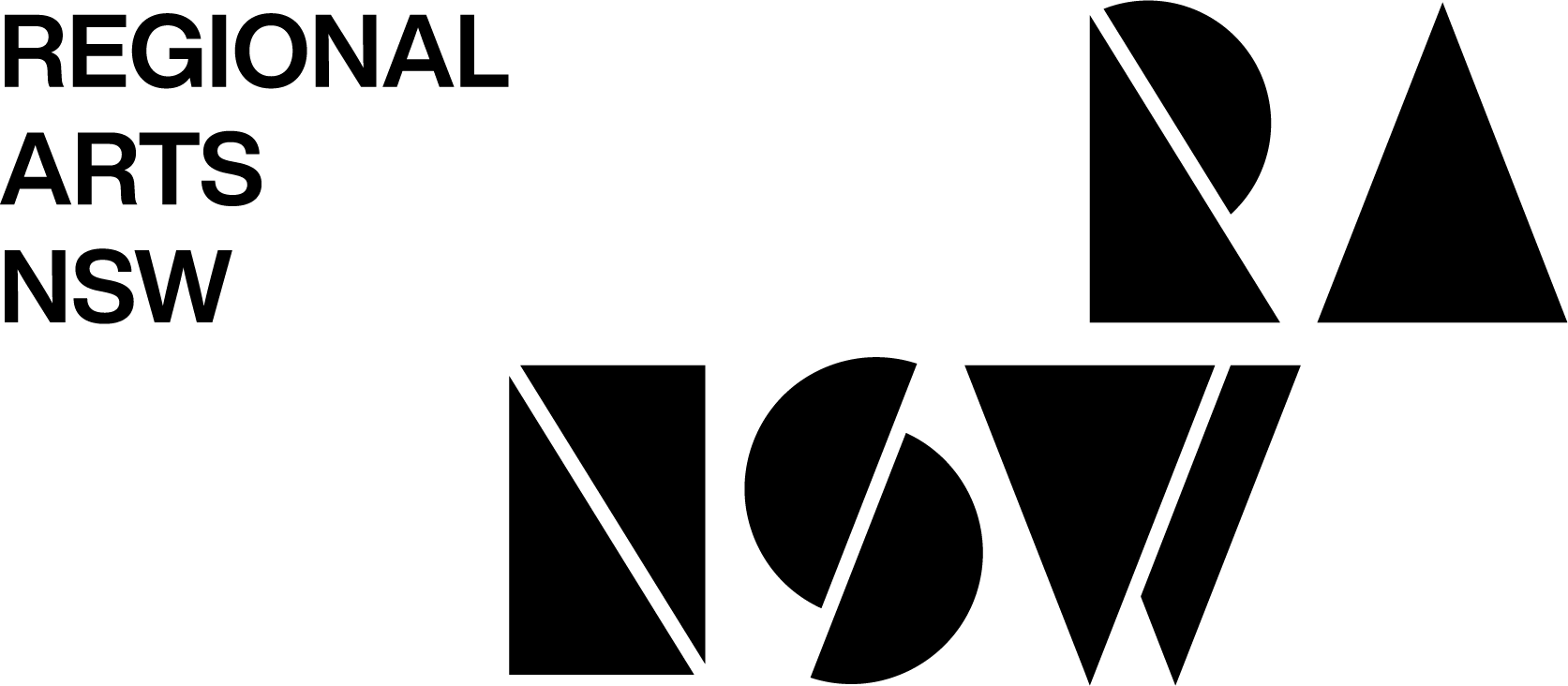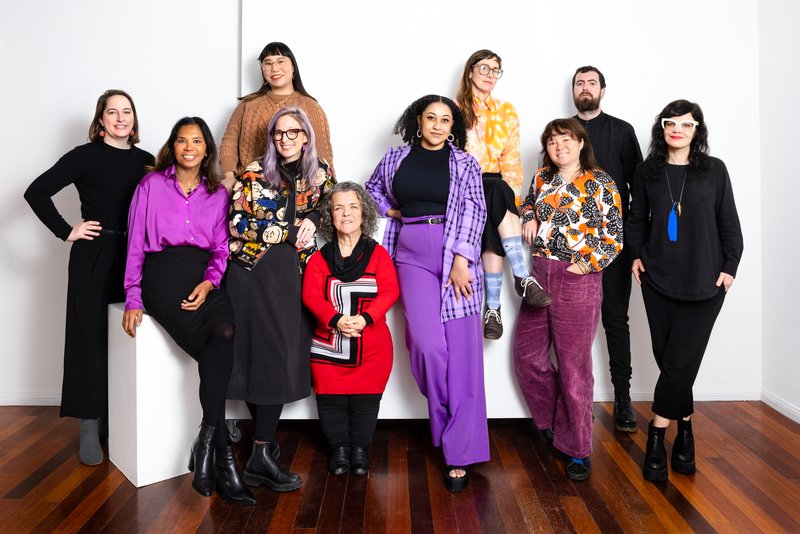Following extensive collaboration across the sector, the National Association for the Visual Arts (NAVA) today soft-launches the new Code of Practice for Visual Arts, Craft and Design. NAVA’s comprehensive review ensures that the Code continues to reflect equitable, ethical and self-reflective standards.
NAVA Executive Director Penelope Benton said, ‘Co-designed and co-authored, the new Code is a celebration of good practice. This comprehensive resource has been written by over thirty arts practitioners, each with lived experience in their subject area.’
Lawyer Terri Janke said, ‘I was honoured to be a part of the process. I worked with NAVA many years ago in developing the Valuing Art, Respecting Culture protocols, and later with the Australia Council for the Arts’ Protocols for using First Nations Cultural and Intellectual Property in the Arts.’
‘NAVA supports an equitable and thriving arts sector. This Code is a practical guide to best practice for all artists and arts organisations. The Code addresses all aspects of visual arts practice including creation, commission, sale and display of work, and financing. It also includes updates and new chapters on social media, racial equity and access rights. This update is timely in a rapidly changing and expanding sector. Importantly, it guides readers on considerations when working with First Nations artists. The Code promotes respect and self determination for all First Nations artists, and supports an Arts sector enriched by the celebration of First Nations art and knowledge.’
‘The Code exemplifies leading artistic administrative practice, and enables the foundations of a strong Australian visual arts sector.’
Penelope Benton said, ‘The 2022 revision represents the first full review since 2009. The Code has been restructured and significantly expanded, with a new opening chapter covering Principles, Ethics and Rights, reflecting the industry’s growing concerns with issues of justice, access, fair work and representation.’
‘The sixth edition of the Code also includes a full revision to Payment Standards for artists and arts workers. Without a legislated Industry Award for the visual arts, craft and design sector, the new Code doubles as both a map and advocacy tool to support the adequate payment of artists and arts workers.’
Other key changes and additions include:
- New sections in the Principles, Ethics and Rights chapter on First Nations, Access Rights for d/Deaf and Disabled People, Racial Equity and Representation, Gender Equity, Equitable Application Processes, Freedom of Expression, Climate Adaptation and Environmental Action, Emergency Response and Disaster Preparedness, Community Engagement, Social Media, and Grievance and Dispute Resolution.
- New sections throughout the Code on Artist Run Initiatives (ARIs), Working with First Nations Art Centres, Touring Exhibitions, Festivals, Funding and Sponsorship.
- Greater support for Access Rights, Indigenous Cultural and Intellectual Property (ICIP) and other specific considerations for working with First Nations practitioners embedded throughout.
The sixth edition of the Code was developed through extensive partnerships, consultation feedback sessions and working groups over three years with over 2,000 artists, arts workers and organisations across Australia.
Brett Adlington, CEO of M&G NSW said ‘Through hundreds of discussions, NAVA has presented this revised Code balancing the complex needs of artists, arts workers with a diverse gallery and museum system. While the key driver of the Code is an agreed standard for the fair pay of artists; there is much here supporting museum and gallery practice including appropriately working with First Nations artists and communities; supporting people with Access needs; incorporating environmental standards and policies through to information on insurance, tax and WHS.’
The Code is available on a new digital platform with improved aspects of design, function and access. NAVA is currently seeking additional funds to support Stage Two of the Code rollout, which will include additional accessibility features such as Auslan interpretations for key sections, visual tools, and audio media to redesign the way people access and interact with the Code content online.
NAVA will maintain the Code as a living document, continuing to adapt and evolve in response to developments in the sector. The arts community is invited to collaborate with NAVA through the online framework for feedback embedded into the new Code website.
In 2023, NAVA will be conducting a series of online training workshops with supporting material to help current and future visual arts practitioners to understand and apply the new Code.
NAVA wishes to thank the Disability Focus Group of eight d/Deaf and disabled artists and arts workers across Australia, Terri Janke and Company, Arts Law Centre of Australia, Accessible Arts, copy-editor Monique Choy, independent reviewer Margaret Mayhew, Code of Practice Project Manager Rhianna Pezzaniti and a great number of artists and arts workers, public and commercial galleries, peak bodies and organisations for their generous collaboration, support and assistance in the drafting of the new Code.
Following extensive collaboration across the sector, the National Association for the Visual Arts (NAVA) today soft-launches the new Code of Practice for Visual Arts, Craft and Design. NAVA’s comprehensive review ensures that the Code continues to reflect equitable, ethical and self-reflective standards.
NAVA Executive Director Penelope Benton said, ‘Co-designed and co-authored, the new Code is a celebration of good practice. This comprehensive resource has been written by over thirty arts practitioners, each with lived experience in their subject area.’
Lawyer Terri Janke said, ‘I was honoured to be a part of the process. I worked with NAVA many years ago in developing the Valuing Art, Respecting Culture protocols, and later with the Australia Council for the Arts’ Protocols for using First Nations Cultural and Intellectual Property in the Arts.’
‘NAVA supports an equitable and thriving arts sector. This Code is a practical guide to best practice for all artists and arts organisations. The Code addresses all aspects of visual arts practice including creation, commission, sale and display of work, and financing. It also includes updates and new chapters on social media, racial equity and access rights. This update is timely in a rapidly changing and expanding sector. Importantly, it guides readers on considerations when working with First Nations artists. The Code promotes respect and self determination for all First Nations artists, and supports an Arts sector enriched by the celebration of First Nations art and knowledge.’
‘The Code exemplifies leading artistic administrative practice, and enables the foundations of a strong Australian visual arts sector.’
Penelope Benton said, ‘The 2022 revision represents the first full review since 2009. The Code has been restructured and significantly expanded, with a new opening chapter covering Principles, Ethics and Rights, reflecting the industry’s growing concerns with issues of justice, access, fair work and representation.’
‘The sixth edition of the Code also includes a full revision to Payment Standards for artists and arts workers. Without a legislated Industry Award for the visual arts, craft and design sector, the new Code doubles as both a map and advocacy tool to support the adequate payment of artists and arts workers.’
Other key changes and additions include:
- New sections in the Principles, Ethics and Rights chapter on First Nations, Access Rights for d/Deaf and Disabled People, Racial Equity and Representation, Gender Equity, Equitable Application Processes, Freedom of Expression, Climate Adaptation and Environmental Action, Emergency Response and Disaster Preparedness, Community Engagement, Social Media, and Grievance and Dispute Resolution.
- New sections throughout the Code on Artist Run Initiatives (ARIs), Working with First Nations Art Centres, Touring Exhibitions, Festivals, Funding and Sponsorship.
- Greater support for Access Rights, Indigenous Cultural and Intellectual Property (ICIP) and other specific considerations for working with First Nations practitioners embedded throughout.
The sixth edition of the Code was developed through extensive partnerships, consultation feedback sessions and working groups over three years with over 2,000 artists, arts workers and organisations across Australia.
Brett Adlington, CEO of M&G NSW said ‘Through hundreds of discussions, NAVA has presented this revised Code balancing the complex needs of artists, arts workers with a diverse gallery and museum system. While the key driver of the Code is an agreed standard for the fair pay of artists; there is much here supporting museum and gallery practice including appropriately working with First Nations artists and communities; supporting people with Access needs; incorporating environmental standards and policies through to information on insurance, tax and WHS.’
The Code is available on a new digital platform with improved aspects of design, function and access. NAVA is currently seeking additional funds to support Stage Two of the Code rollout, which will include additional accessibility features such as Auslan interpretations for key sections, visual tools, and audio media to redesign the way people access and interact with the Code content online.
NAVA will maintain the Code as a living document, continuing to adapt and evolve in response to developments in the sector. The arts community is invited to collaborate with NAVA through the online framework for feedback embedded into the new Code website.
In 2023, NAVA will be conducting a series of online training workshops with supporting material to help current and future visual arts practitioners to understand and apply the new Code.
NAVA wishes to thank the Disability Focus Group of eight d/Deaf and disabled artists and arts workers across Australia, Terri Janke and Company, Arts Law Centre of Australia, Accessible Arts, copy-editor Monique Choy, independent reviewer Margaret Mayhew, Code of Practice Project Manager Rhianna Pezzaniti and a great number of artists and arts workers, public and commercial galleries, peak bodies and organisations for their generous collaboration, support and assistance in the drafting of the new Code.

